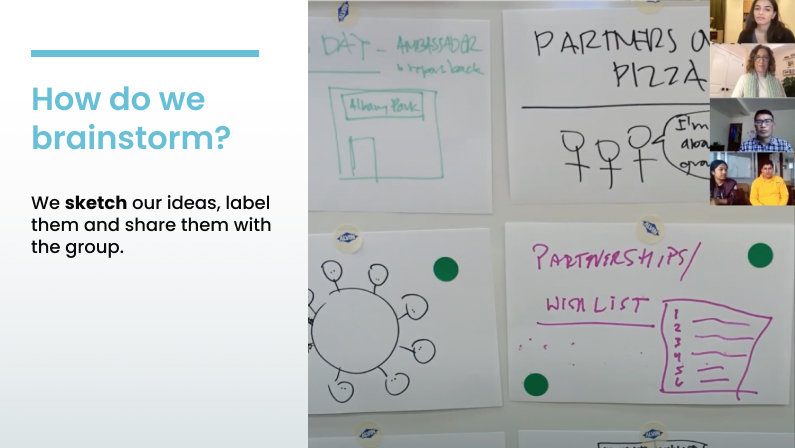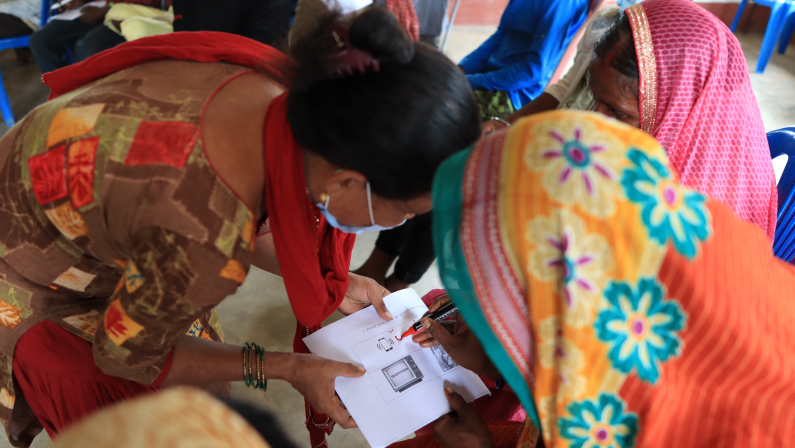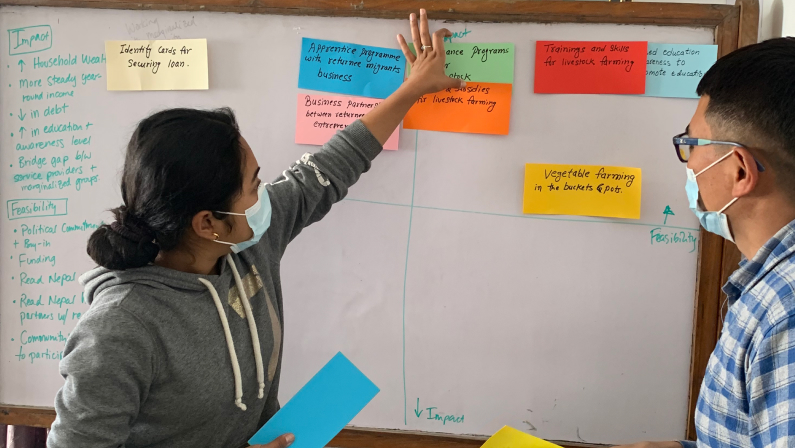
Client
Humanity United is a philanthropic organization dedicated to cultivating the conditions for enduring peace and freedom. They work alongside partners who are working to advance human dignity and change the systems that enable violent conflict and human exploitation around the world. They are a funder of READ Global.
READ Nepal is a grantee of Humanity United and a non-profit that facilitates the creation of self-sustaining and community-led library and resource centers (READ Centers) that serve as a foundational platform for unlocking a community’s social and economic potential.
Topic Areas
Community Development
Education
Youth Development
Project Types
Digital & Physical Tools
Programs & Services
Humanity United is focused on improving the lives of marginalized people around the world. They understood human-centered design (HCD) as a method for getting more authentic insights and therefore funding more relevant programs and initiatives. However, as a funder, they knew that it was their grantees who should apply HCD to their front-line work, and so they engaged GGS to work closely with a grantee.
READ Global and its local affiliate, READ Nepal, are deeply rooted in the communities of Nepal. Their team was open and interested in learning about HCD, and they were ideally positioned because they already had strong relationships and trust through their READ Centers. Over the course of a year, we worked closely with READ Nepal to guide them through the design of several new programs and services, while also building their capacity for human-centered innovation.
Project Outputs
Tools
This project resulted in an HCD Guidebook that walks through the curriculum customized to the READ Nepal context. The Guidebook links to workshop slides and templates that the team can continue using for future projects. We also included their work in one of the communities as a Guidebook case study so they have a real-life example of “HCD in action” which matches their context.
Key materials were translated into Nepali to ensure the materials had as much utility for as many staff as possible.

Learning Experiences
The key deliverable for this project was a workshop-based learning program, customized to fit the READ Nepal context. The learning program included workshops that were accompanied by presentation materials and recordings so the team could reference them later. Additionally, we conducted regular coaching calls and provided the team with activity templates so they could work independently.
Client & Community Outcomes
By the end of our time with the READ Nepal team, they had a deeper understanding of both the HCD process as well as the importance of maintaining a human-centered mindset. Our engagement also provided the team with a structure and tools that they can use for future work.
Through this human-centered process, the READ Nepal team was able to forge stronger relationships with stakeholders in Jahada and Siraha than they had previously maintained. They were also able to successfully connect with a specific group of people, whom they defined as “most marginalized,” in their society, and to build trust and understanding with this harder-to-reach group. Not only did the team view their research efforts as successful, but the ideas they generated and tested with the communities around livestock farming and mobile classrooms were also well-received and gained momentum. In fact, the mobile learning classrooms tested in Siraha received government funding and have expanded to 40 locations.
It has made our team, READ Nepal team and field team more observant. Before this, we would just go and see one thing and say that that is their need. But my experience [doing research] was eye-opening. Now we’re asking them, what is your need? It’s not a yes or no question, it’s them explaining to us what their problems are. It has made us more empathetic. We have the trust of the community. HCD has helped us evolve.
READ Nepal staff
Team and Studio Impact
Our team entered this project with a good degree of hesitation, because we are acutely aware of the perils of ‘helicoptering’ into a context that we know very little about. We also understood that this work was being funded by a US-based philanthropy, and that we might be offering our Western notions of what makes design ‘good’ or ‘human-centered’ to an audience who wasn’t fully bought in. Given these conditions and others, we proceeded with an even greater sense of responsibility and intentionality.
One way we overcame some of this apprehension was by finding a local liaison to bridge this cultural and knowledge gap. We looked to bring on a team member that was well-versed in human-centered design, lived in Nepal, spoke the local language, and understood cultural norms. We were lucky enough to connect with Bahar Kumar, who served as an extension of our team in Nepal. Not only did she provide in-the-moment translation during workshops and coaching, but was also able to advise us on how the information might be best communicated, both verbally, in written language, and visually, for this unique context. This affirmed our belief that it is critical to partner with a local liaison, especially when working internationally.

Another dynamic to navigate was the fact that READ Nepal was already doing deeply human-centered work day to day, and so we wanted to be intentional about recognizing and building upon that foundation. And, as they learned more about the HCD process, they told us that they desired and appreciated the structure and rigor that we were bringing, and that it was a good complement to their work in community development. Bolstered by the spirit of mutual respect, we were able to both amplify their efforts and fill in the gaps they felt they had. In addition, we found that our professional relationship as organizations grew to be more light-hearted, vulnerable, and personable as time went on.
Throughout this work we also learned what it means to have a funder and partner with great integrity. Humanity United showed up in this process in the humblest way, agreeing to participate or step away completely, as deemed appropriate by us and the READ Nepal team. They put complete faith in their grantees and checked in with us as needed. They offered extreme flexibility in adjusting our scope and timeline and even adjusting the use of funds to accommodate new and unforeseen needs that arose due to the pandemic. This level of adaptability exposed us to a funder-grantee relationship not commonly seen and experienced, and helped us see what it looks like when a philanthropic partner is operating from a place of humility and integrity.
With regard to 16 years experience working with READ Nepal, what is new for us is that we used to do programs, needs assessment and based on needs assessment we do the program designing with the community and then we do the implementation and then evaluation – this is the traditional method of developing projects. Whereas, HCD is continuous reiteration and then being with the community, spending more time on research to understand what they really want. That thorough process was not there for us, I have to admit that. This is quite new for us.
READ Nepal staff








